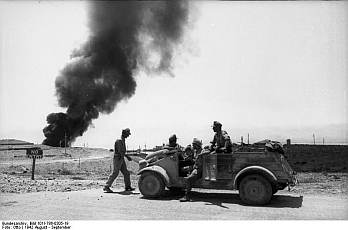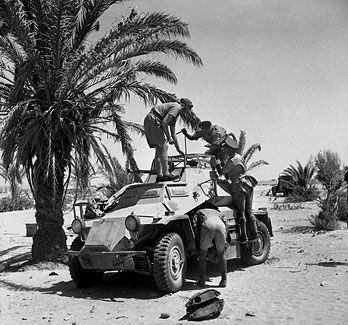![]()
![]() Selected
WW2 70th Anniversaries this month:
Selected
WW2 70th Anniversaries this month:
Between 2009 and 2015, I will be pursuing a general modelling theme that marks selected 70th Anniversaries from WW2.
|
October 1942 - The Battle of Stalingrad remains the focus of activity on the Eastern Front. Soviet commanders move Red Army strategic reserves from Moscow to the lower Volga and transfer aircraft from the entire country to the Stalingrad region. Throughout the month the Luftwaffe pounds the city, with Luftflotte 4 flying 2,000 bombing sorties on 14 October alone, whilst bitter hand to hand fighting continues in the rubble below. 3 Oct - The first A-4 (V2) rocket is successfully launched from Peenemünde, Germany. The rocket reaches a height of 84.5 kilometres, becoming the first man-made object to reach space. 11 Oct - At the Battle of Cape Esperance, the US Navy defeats a large Japanese naval force heading for Guadalcanal. This is the first defeat of the Japanese Navy in a surface engagement and provides a significant morale boost to the Allies. |
|
23 Oct - Pacific Theatre - The decisive Battle for Henderson Field begins in Guadalcanal. By 26th Oct, the Japanese attack has been repulsed and there will be no more serious attempts to retake the island.
|
© Crown Copyright IWM (E 18474) |
23 Oct - North African Theatre - An artillery barrage marks the start of the 2nd Battle of El Alamein. 220,000 men and 1,100 tanks of General Montgomery's 8th Army advance across the minefields. Rommel has returned to Germany for medical treatment; the 115,000 men and 559 tanks of the Panzer Army Africa are under the temporary command of Lt Gen Stumme. On 24th Oct, Gen Stumme moves forward to the front to see the allied advance for himself. His group comes under fire and he suffers a fatal heart attack. Afrika Korps commander General Thoma assumes temporary command. Rommel is summoned back from Germany and arrives in theatre late on the evening of 25th Oct. 26 Oct - Pacific Theatre - The Battle of Santa Cruz Islands. Two US Navy Task Groups led by the carriers USS HORNET and USS ENTERPRISE engage a Japanese force of 4 Fleet Carriers, Sho-kaku, Zuikaku, Hiyo and Junyo, plus the light carrier Zuiho. The USS HORNET is sunk and ENTERPRISE badly damaged, leaving only one Allied carrier operational in the entire Pacific theatre.
However,
two Japanese carriers are also badly damaged and more significantly,
the Japanese have lost 148 of their most experienced aircrew, a blow
that will limit their war-fighting capability for the rest of the
war. Two undamaged Japanese carriers are now forced to return to port
as they no longer have sufficient aircrew to operate. Throughout the month, significant convoys of warships troopships and merchantmen sail from British and US ports, their destination unknown even to the crews and men onboard. The departures are noted by German U-boats and reconnaissance aircraft, but their attention is distracted by several vulnerable northern convoys and the significance of a massive force at sea passes unrecognised. |
Headquarters 8th Army, El Alamein, October 1942
Hasegawa 1/72, with Bison decals
At the start of WW2 the US Army had astonishingly few tanks, and it was quickly clear that they would be no match for German armour. Building on British experience, the M3 General Lee tank was quickly produced as an interim design, using the running gear of the M2, but adding a powerful new 75mm gun in a rather old-fashioned sponson on the right hand side of the hull.
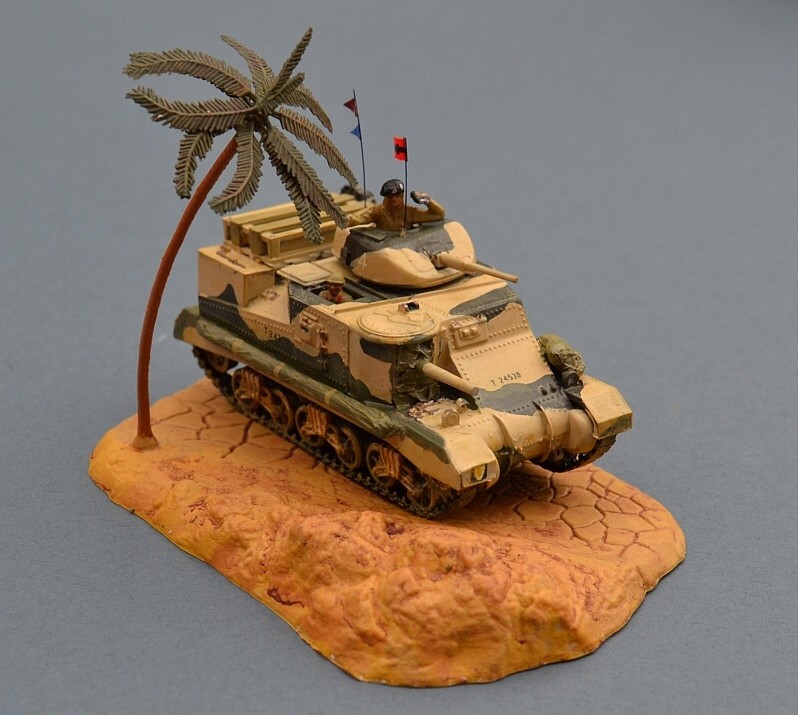
The resultant high silhouette of the M3 and its limited firing arcs were not ideal, but the running gear was relatively reliable and the larger gun could match the armour plating of any other tank in existence at the time. Drawing on the bitter experience of the British, it also allowed the use of high explosive ammunition, enabling the tank to engage non-armour targets, such as the German's deadly 88mm and 75mm anti-tank guns.
|
|
Concerns about the lack of an effective integrated radio system led the British to order a modified variant, named the General Grant, with a lowered cast turret containing a commander's radio. First used in the desert in 1941, the Lee and Grant tanks proved relatively successful, although their known limitations meant that they were quickly replaced by M4 Sherman tanks as soon as these became available. Existing hulls then became the basis of a number of specialist Allied vehicles, primarily self propelled guns General Montgomery used an M3 Grant as his command tank from the Battle of El Alamein right through to the invasion of Europe in 1944. The tank now resides in the Imperial War Museum as a lasting memorial to the 8th Army. Hasegawa's range of 1/72 AFVs is generally very good, although becoming relatively expensive these days. For this build I have added some Bison decals for Monty's command tank, plus a few add on upper deck stowage items, and a cloth mantlet dust cover for the main gun.
|
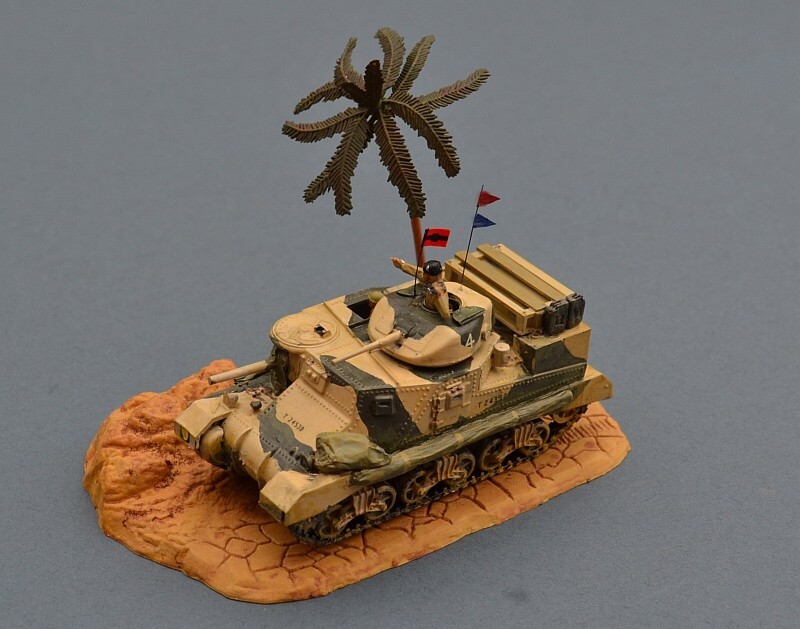
The basic "Monty" figure comes with the kit, although he is intended to be a US uniformed tank commander, so I added the distinctive beret. His Chief of Staff down in the right hand hatch is a figure from the Airfix 6lb gun kit.
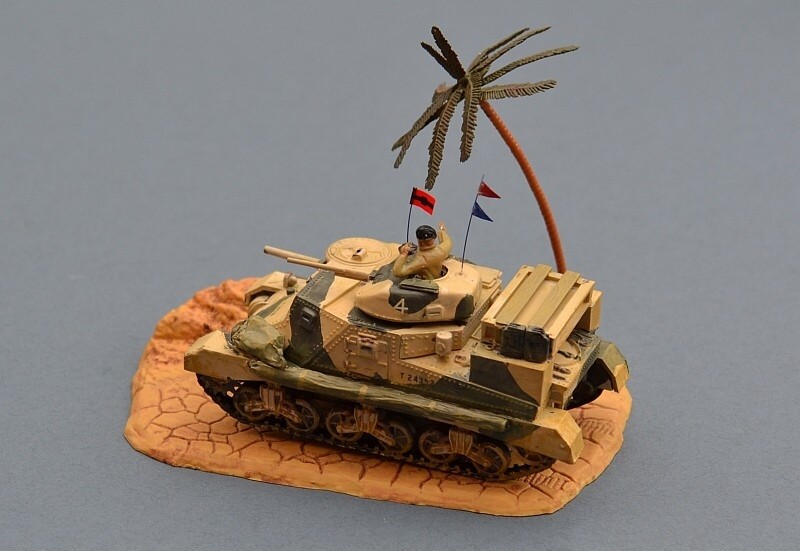
More Tanks and AFVs on my Dark Side pages
Panzer Army Africa, El Alamein, October 1942
Airfix 1/76 HO-OO Reconnaissance Set
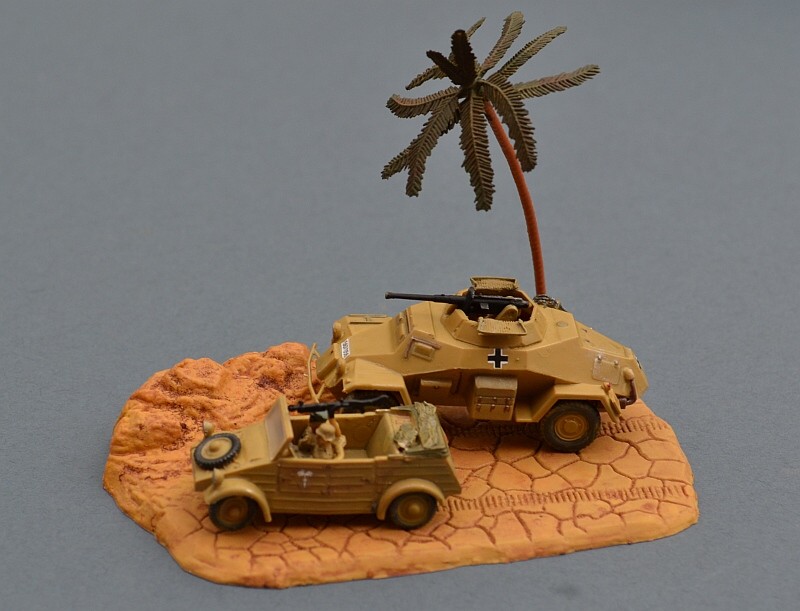
Leichter Panzerspähwagen Light Armoured Reconnaissance Vehicles were a series of light four-wheel drive armoured cars produced by Germany from 1935 to 1944. Based on the Auto Union - Horch heavy car, the vehicles appeared in a number of variants and were widely used by reconnaissance units on all fronts of WW2, including North Africa, where their relatively limited off-road capabilities proved a disadvantage.
The VW Type 82 Kubelwagen was developed from the ubiquitous VW Beetle and designed by Ferdinand Porsche. Its name translates literally as "bucket truck", reflecting its utilitarian and rather basic construction. Lightweight, reliable, cheap to build and remarkably good off-road, it gave valuable service on all fronts throughout the war.
|
Africa
Corps personnel view the battle from their Kubelwagen |
British
Officers inspect a captured Sd Kfz 222 in North Africa |
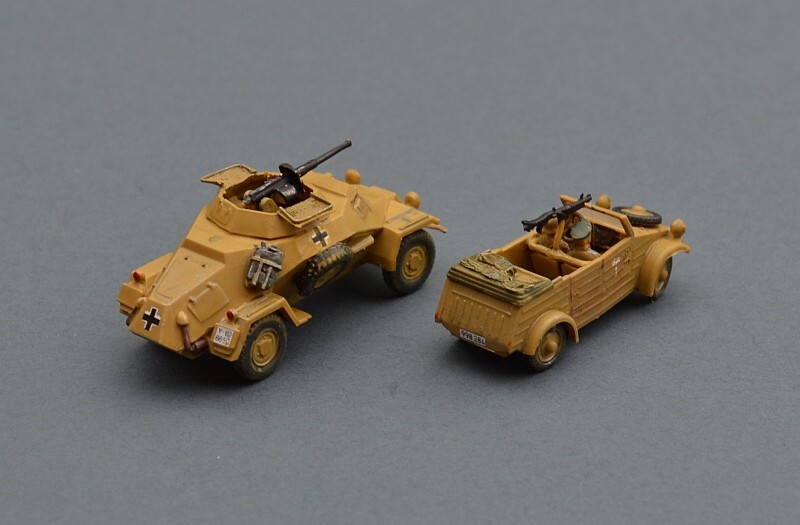
The Airfix Reconnaissance Set provides a good example of two of the most numerous German vehicles of WW2. Both are rather basic representations, so I have added a few extra details, in the form of the mesh grenade screen for the turret roof (two staples and some wire gauze), a water Jerry-can and some extra stowages.
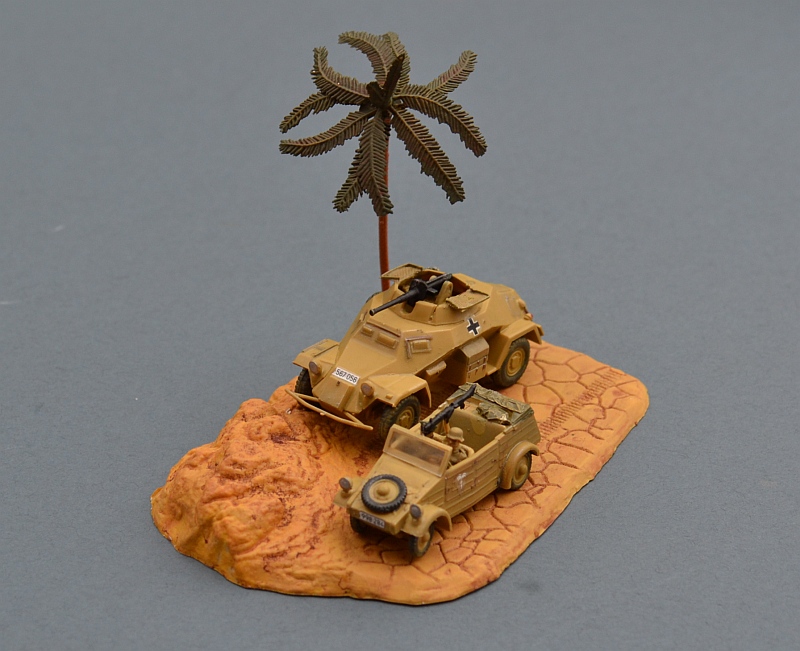
 V for Victory.jpg)
V
for Victory - A soldier of the 8th Army gives the Viccies to two
captured Afrika Korps prisoners
©
Crown Copyright IWM (E 18522)
More Tanks and AFVs on my Dark Side pages
Link
to previous month Link
to Next Month
 Montys Message.jpg)
Montgomery's
message to his troops in October 1942
©
Crown Copyright IWM (MH6005)
www.gengriz.co.uk
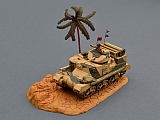
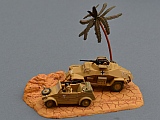
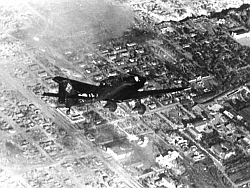
.jpg)
.jpg)
